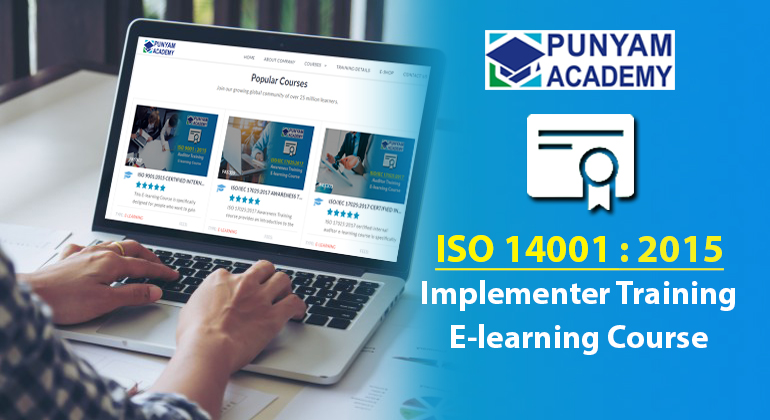ALL >> General >> View Article
Integration Of Iso 14001 Principles & Circular Economy
The circular economy policy and ISO 14001:2015 are both based on the same idea: waste minimization and risk reduction actions depending on the organization's impact on the environment. While the concept of a circular economy is new to many organizations, it has become clear that there are circular economic principles that can be used or expanded to help the organization achieve its goals of ISO 14001: 2015.

The concept of a "circular economy" in today's society is growing, as more and more business leaders want to make sure that planetary ecosystems can support modern and sustainable lifestyles. The circular economy is a concept where products are increasingly recycled and recycled, natural resources are recycled in a variety of ways, and any “capital” is consumed and consumed by various production streams to reduce consumption of natural raw materials to a minimum.
Here are some of these principles and how they can be implemented using ...
... ISO 14001:
Zero Pollution: This is a concept adopted by many modern organizations with performance indicators set out to try and ensure that no part of their product, or waste from their manufacturer, goes to landfill.
Eco-design: This is the concept of deliberately incorporating environmental features into your product design process, as opposed to a design process that has unexpected environmental features. The idea of describing the design features of the existing natural process of ISO 14001 confirm that the features that are easy to change while the robbery.
Open loop system: This is basically where your products or components can be reused or recycled, even if they are separate products. This is easier in some sectors than in others, but the benefits are greater if not used. For example, if your product uses glass or plastic bottles.
Recycling: The circular concept of economy supports the economy in the years to come when electric and electrical devices that are currently separated will eventually be recycled and “eliminated” to reduce the environmental impact. Where elements, the anointing of the product or the chassis, electrical or track, this could be the stage of architecture and the cost of restoring and maintenance included in the cost.
Disruptive technology: One of the most exciting and innovative technologies linked to the concept of a circular economy cycle, the idea that two separate and unrelated businesses can adapt parts of their value chain to support each other's performance, by eliminating waste as a result. A situation like this can have a very positive impact on product promotion, waste reduction, reuse costs, hazardous materials, and the previous need to buy more energy in the context of the two organizations involved, all of the major ISO 14001 goals of many organizations.
There are many ways in which ISO 14001: 2015 and circular economic services can be used together to achieve improved environmental outcomes. The general idea of waste minimization and the increased use and utilization of natural resources should also decrease costs for the manufacturer. To measure the effectiveness of an Environmental Management System, Such EMS ISO 14001:2015 Auditor Training to improve your knowledge of the ISO 14001:2015 standard, and help you understand about principles that can help your EMS performance.
Source: ems14001consultant.wordpress.com
Add Comment
General Articles
1. E-signature Platform Market Overview: Expected To Expand At A Cagr Of 15.5% To Usd 11.8 Billion By 2035Author: KD Market Insights
2. Important Considerations In Filing An Injury Claim
Author: Gary Martin
3. Ṛta: The Vedic Origin Of Cosmic Order
Author: Chaitanya Kumari
4. Practical Skills Essential For The Application Of Book Knowledge To The Real World
Author: Chaitanya Kumari
5. A Popular Platform For Real Estate Crowdfunding In Dubai And The Uae
Author: luxury Spaces
6. How To Choose A Reliable Commercial Solar Panels Provider
Author: sunrunsolaraus
7. Master Of Computer Applications In Ml & Ai (online) – 2026 Guide
Author: UniversityGuru
8. Web Development: A Complete Guide To Building Modern Websites
Author: vidhi
9. No Ielts? No Problem! 10 Countries Without Ielts That Accept Indian Students
Author: oorja
10. Improving Patient Care Through Digital Dental X-ray Imaging
Author: Riverplace Periodontics
11. The Inspiration Behind The Lad In The Lane !
Author: Lakeland Mystery
12. When Do You Need A Book Publishing Consultant?
Author: Wilton Books LTD
13. Commercial Refrigeration Fixes Restore Operations Quickly At Samco
Author: John Smith
14. Nature As A Teacher: What Ṛta Reveals About Living In Harmony With The World
Author: Chaitanya Kumari
15. Luxury Custom Pvc Patches In Uk When It Comes To Good Customized Pvc Patches In The United Kingdom, Only Selective Ones Qualify!
Author: PVC Rubber Patches in UK








